Bernoulli Plates | Ngā Perēti a Bernoulli
Introduction
Abstract
Surprisingly two plates are attracted when air flows out from the space between them!
Principles Illustrated
Fluid flow and Bernoulli’s Principle.
Content
Video
English version
Exhaust Side
Exhaust Lift
Intake Lift
Intake Side
Instructions
The vacuum is turned on with the hose attached to the intake. The lower plate will be attracted either sideways or upward toward the upper plate. This is not at all surprising. Now attach the hose to the exhaust. As the upper plate is brought toward the lower plate, the blowing air will initially repel the lower plate. However, as the two get closer together the reduced pressure associated with faster flow (as promised by Bernoulli) will attract the lower plate! This is indeed surprising to students. See the multimedia resource and the videos above.
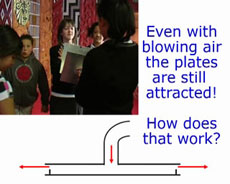
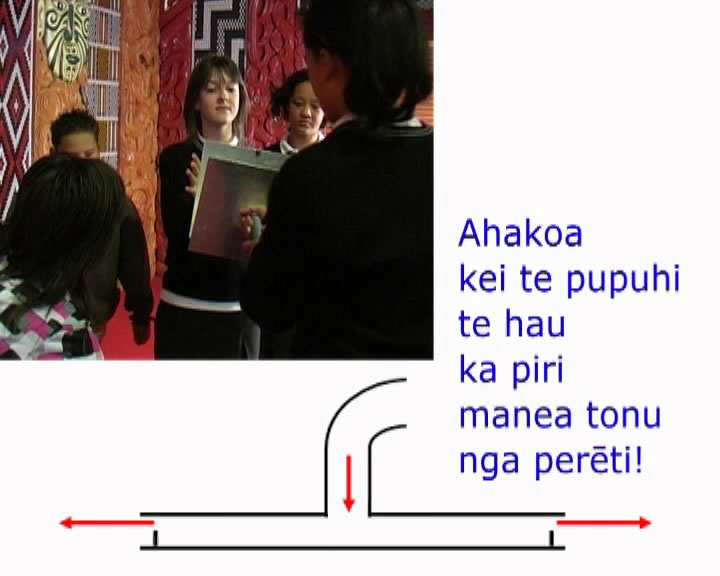
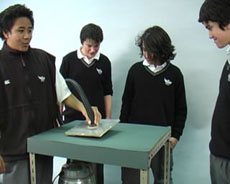
Construction
We can bring this one to you, but you can also make this demo yourself. You’ll need a vacuum cleaner or shop vac that has an attachment for exhaust as well as intake, duct tape, pins, corks, cardboard, and a craft knife. Cut a hole in the top plate for the hose. Attach hose as shown in the hose detail photos below. The bottom plate is assembled by pushing pins through to a cork on the opposite side as shown in the photo above. We have assembled two top plates and two hoses, one for exhaust (silver) and one for intake (black) to speed operation.
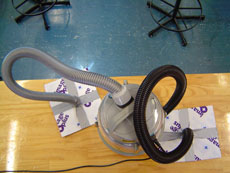

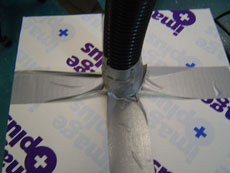
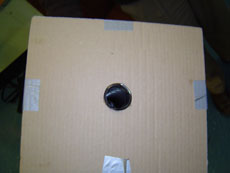
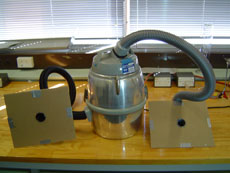
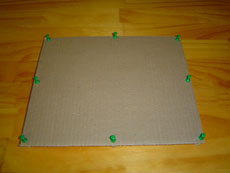
Other Information
Safety
The airflow can contain dust and particles. Do not let students point it at a person’s face.
Individual teachers are responsible for safety in their own classes. Even familiar demonstrations should be practised and safety-checked by individual teachers before they are used in a classroom.
Related Resources
Bernoulli Tubes, Pōro me te Ipuroa Wahanui (Bernoulli Funnel), Pōro Rewa (Bernoulli Levitating Ball)
Notes, Applications, and Further Reading
Bernoulli’s principle tells us that the pressure is lowest in a fluid where the fluid is moving fastest (for points at the same height). This is reflected in Bernoulli’s equation for an incompressible fluid:

Here we have a blower producing a fast-moving column of air. The air between the plates is moving at high speed, and thus the pressure there is lower. The higher pressure air surrounding the apparatus pushes the plates together.
This demonstration is related to PIRA 2C20.30.
Credits
This teaching resource was developed by the Te Reo Māori Physics Project with support from
- Te Puni Kōkiri
- The MacDiarmid Institute
- Faculty of Science, Victoria University of Wellington
- School of Chemical and Physical Sciences, Victoria University of Wellington
- The New Zealand map shown on the poster frame above is used with permission from www.nz.com.
- Parts of the video were filmed at Te Herenga Waka Marae at Victoria University.